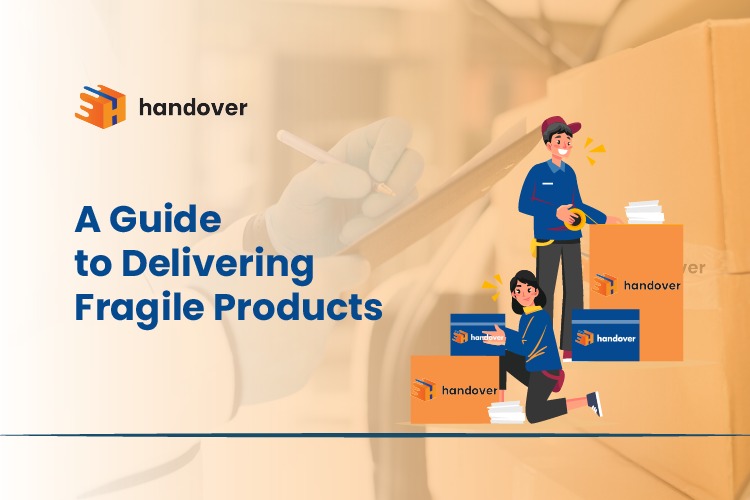Handover news
Blog
A Guide to Delivering Fragile Products

In the logistics business, one of the significant tasks is to deliver products to customers. Because its foundations are completely dependent on delivery operations. Customers order any goods from their favourite retailers who have to deliver the same to customers. Meanwhile, retailers receive some fragile product orders, which have to be delivered cautiously to avoid the risk of being broken. To mitigate such risks, there are several measurements that you can take. In this write up, we will know what fragile goods are and emphasise adopting the necessary measures to avoid getting them broken while delivering.
What are Fragile Goods?
When we talk about fragile products, it can be anything such as glassware, musical instruments, technology products, and other delicate products that can break with slight negligence. So, these products must be shipped carefully, otherwise, they easily get broken during the delivery process. Consequently, retailers have to endure a significant loss of money.
What is the Repercussion Should Fragile Goods Break During Transit?
Customers order products from retailers and they want the same to be delivered to them in their original condition. But if you fail to deliver fragile products properly to your customers, you may lose their loyalty, affecting your business heavily. The following are some of the repercussions if fragile goods are broken while delivering.
Bad Reviews
Customers nowadays demand high-quality products that should be available at reasonable prices and delivered quickly. So, retailers’ goal must be to impress customers by fulfilling their delivery expectations. But at the same time, the reputation of your business can be affected if your consumer gets delivered a broken product. Quite a dilemma one could be in when delivering fragile goods. When you could not deliver products properly to your customers, why would they buy from you again? They might avert relatives and friends from doing business with you. Thus, the reputation of your business may get adversely affected.
Once you deliver defective products to your customers, they might request you for a refund and are likely to never buy from you again. It can create a bad impression that you can’t deliver things properly. So there are high chances that your business cannot thrive.
Costly Returns
We have also experienced several times that if we receive damaged products, we quickly return them. It means putting an extra workload on the product’s production, packaging, shipment, and transportation. Hence, it also increases the workload of employees involved in whole supply chain management.
Once products return to retailers, there would be a whole new process to replace the broken products with new ones. They need to repackage and re-deliver the products to customers, which can enhance the labour cost.
How to Deliver Fragile Goods to Customers?
Wrap it Well
Make sure that you have the right packing materials for packing your fragile products properly and deliver it to your customers. For packaging a fragile product, you can use a large roll of bubble wrap, which can protect your goods from being broken. When using the bubble wrap for packing, fragile products get an extra layer of protection, demonstrating your care towards customers.
Use a Slightly Large Box
When using boxes for packing fragile products, you may select the boxes that don’t have too much space in them, which can cause your products to shift around. When you use a slightly larger box than the product, the remaining empty space can be filled with dunnage to keep everything in place. Thus, you can safely deliver your fragile products to your customers without being broken.
Add “Fragile” Label to the Box
If you mention fragile labels to the box, there are more chances that it can save your fragile products from being broken. Because, we might have seen the logistical process of goods, how they are treated. Whenever loading staff offload any products from the truck, they normally throw them away, and the same applies at the time of unloading goods on the truck. Meanwhile, there are high chances of fragile products being broken. So, add a “Fragile” label to the box, preventing the staff from throwing them away.
Use Air Pillows or Packing Peanuts
Using an air pillow or packing peanuts can help your fragile products reach safely to your customers. It generally fills the empty space left after putting the products inside the box. Therefore, this method can help deliver your fragile products properly.
Conclusion
Customers returning defective products not only add to your cost but also harm your reputation. So, when delivering fragile products to your customers, make sure to take all precautions to protect your products. handover, a leading delivery service company in India, can safely deliver fragile products to your customers. Collaborate now!
